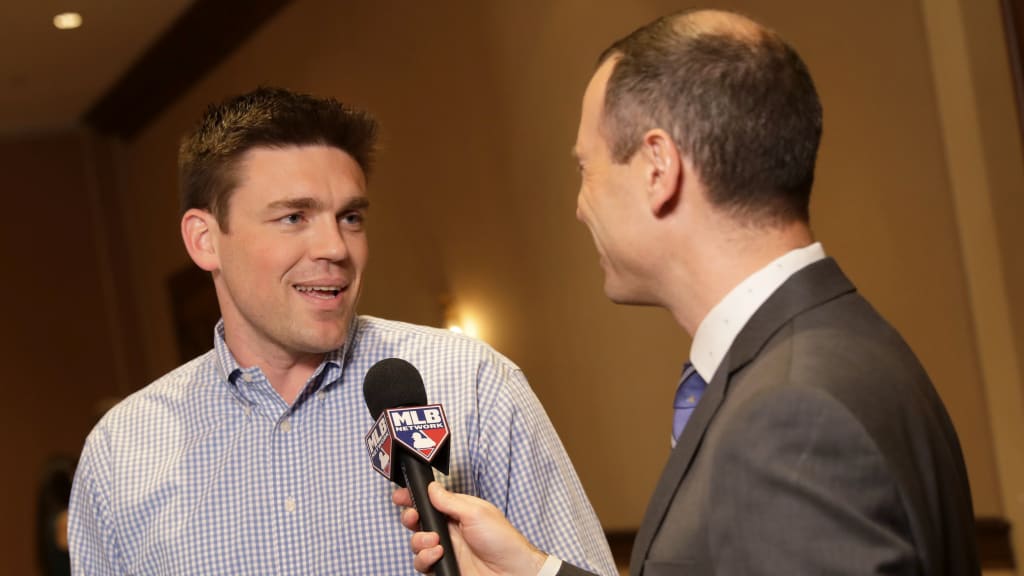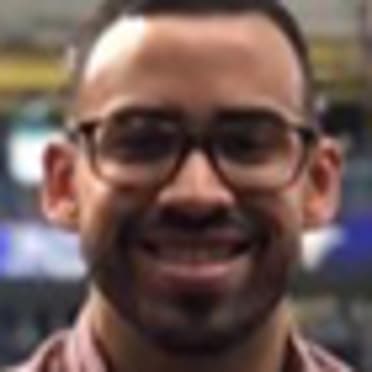
Adding offense will be the priority for the Rays this offseason. They scored 4.75 runs per game in 2019, which was tied for 15th in the Majors and the lowest among the five teams that made the playoffs in the American League. Avisaíl García and Travis d'Arnaud, who finished in the team’s top seven in OPS+, also are free agents.
“I think we feel really good about the pitching side at this point,” Rays general manager Erik Neander said earlier this week. “We feel really good about our position players as well, but you look at some of the more elite teams in the game and where they are -- our run prevention is in a place it needs to be in order to be a top-tier club, but we need to find a way to score more runs, ideally without sacrificing the pitching side. It’s easier said than done, but we have a few months to figure out any possible way that we can do that.”
While Neander and the Rays would ideally not sacrifice pitching, that would probably have to be the case if Tampa Bay has a way to improve the offense via trade. The Rays’ pitching staff finished the season with a 3.65 ERA, the lowest in the AL, and that was with Tyler Glasnow, Blake Snell and Yonny Chirinos missing significant time. But because of those injuries, they have a ton of depth on the pitching side, plus an elite farm system, which would allow them to possibly trade an arm or two for a quality bat without really sacrificing the core of the pitching staff.
Howie Kendrick is a name that has been linked to the Rays during the offseason, which would make a lot of sense. It’ll be interesting to see what the team does during the offseason, but adding offense seems to be the priority over the winter.
Like every free agent, the Rays are going to explore the market and see what a reasonable price tag is for each individual. García, who hit a career-high 20 home runs last season, would certainly give the lineup a boost, but it’ll all depend on the price. At this point in free agency, it appears unlikely that they bring him back. If Tampa Bay ultimately decides to let him walk, it will have to find a way to replace his production (García’s 111 OPS+ last season ranked sixth on the team), but I’m not necessarily sure it’ll come from an outfielder.
The Rays could opt to go with a designated hitter, someone like Edwin Encarnación or another infielder, and focus on the outfield later. It’s also important to note that Brandon Lowe can play the outfield when needed, so a combination of Lowe and Austin Meadows at right field could definitely replace García’s production, assuming the Rays decide to upgrade their offense at a different position.
Brent Honeywell hasn’t pitched in a game in two full seasons, which means the Rays will be extremely cautious with their No. 5 prospect, per MLB Pipeline. Honeywell is expected to start throwing in January, but his rehab schedule will all depend on how his right arm responds. He would’ve been a key piece in the rotation in 2019, but a setback during his recovery from Tommy John surgery ended his season in June. Tampa Bay remains optimistic that Honeywell will return and be a big league pitcher, but it’s probably fair to temper the expectations next season as the priority is to get him back healthy.
Alvarado’s struggles in 2019 had nothing to do with the quality of his stuff. When he’s on, he still has elite movement and pitches. Alvarado finished with a 24.9 Whiff% with the sinker in ‘19, which is higher than the 24.2 mark he posted in a breakout ‘18 season. The same goes for his cutter, which saw a Whiff% increase from 58.5 in ‘18 to 61.4 in ‘19.
But all of Alvarado’s struggles came from his inability to consistently throw strikes. The left-hander threw just 43.5 percent of his pitches in the strike zone in 2019, down from 50.1 percent in ‘18. His walk-rate ballooned from 11.0 in ‘18 to 18.5 in ‘19. Leaving the team for over a month certainly hurt Alvarado’s mechanics, but the club is hoping that a full offseason and Spring Training can get him back on track.
